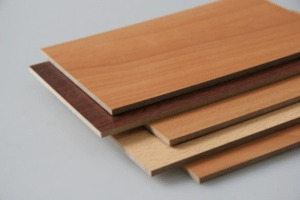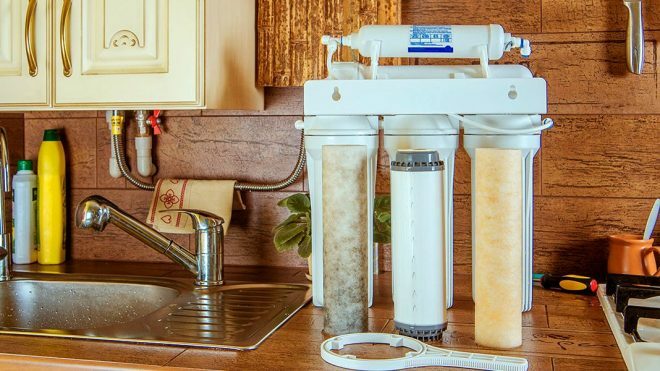Contents
- Compound Plastering. This composition, which levels the walls inside or outside the room, prevents the appearance of cracks, improves the microclimate, serves as a basis for decoration or as a finishing layer for both facades and premises. Depending on which function of these is preferable, choose slightly different compositions. Today, there are quite a few types of dry plaster mixes on the construction market, the properties and features of which should be discussed in more detail.
 is an dry stucco often confused with an dry stucco. The latter is a regular sheets of drywall and is designed to simplify, speed up the repair and construction work. Dry mixtures must be diluted with water in the indicated proportion before application. Of course, you can make a mixture with your own hands, but then its quality and desired properties will be under a big question. That is why is better to buy ready-made mixture .
is an dry stucco often confused with an dry stucco. The latter is a regular sheets of drywall and is designed to simplify, speed up the repair and construction work. Dry mixtures must be diluted with water in the indicated proportion before application. Of course, you can make a mixture with your own hands, but then its quality and desired properties will be under a big question. That is why is better to buy ready-made mixture .
safe and environmentally friendly materials fall into the hands of buyers. The choice of plaster mixes from Lentechstrom is able to satisfy any requirements, and the range is constantly updated. With all these advantages, the company is also distinguished by a well-thought-out pricing policy with a flexible discount system, and experts are always ready to give good advice and advice. A lot of companies producing plaster mixes appear on the modern market, but if quality is really important, then it is better not to risk and buy material from reliable manufacturers, for example, here. Lentechstrom company specializes in the production of various building materials, among which dry plaster mixtures play a key role. For a long time, the company has already established itself as always high-quality products manufactured according to European standards. Quality control is carried out at each stage, and production is carried out using the most modern technology. In addition, the company boasts the presence of its own laboratory, which not only tests and analyzes manufactured products, but also constantly works on improving them and developing new types of plaster mixes. Constant sanitary control is carried out, so only
A lot of companies producing plaster mixes appear on the modern market, but if quality is really important, then it is better not to risk and buy material from reliable manufacturers, for example, here. Lentechstrom company specializes in the production of various building materials, among which dry plaster mixtures play a key role. For a long time, the company has already established itself as always high-quality products manufactured according to European standards. Quality control is carried out at each stage, and production is carried out using the most modern technology. In addition, the company boasts the presence of its own laboratory, which not only tests and analyzes manufactured products, but also constantly works on improving them and developing new types of plaster mixes. Constant sanitary control is carried out, so only 
Composition of plaster mixtures
In order not to get lost at the sight of a significant selection of plasters, it is important to know which one is intended for. So, if front works are coming, the choice is limited to cement or cement-sand dry mixtures. But if work is being done indoors, then gypsum plasters are also added to the listed list. What do these materials represent themselves?
All dry mixes for plaster are divided into several types, depending on the binder.

Cement plaster
 One of the most popular and sought-after formulations. Here cement is used as a binder, and sand is used as a filler, but sometimes additives may be present in the composition, which improve ductility or adhesion. This is a universal plaster, which can easily be used both for exterior and interior work, while at the same time ensuring durability and resistance to external negative factors. The advantages of the advantages of such mixtures include their long-term viability: you can immediately mix a sufficiently large amount of plaster, for example, in a concrete mixer, and be completely sure that it will not harden in the tank during operation. The strength of the finished surface and the low cost of the mixtures themselves complement the list of advantages.
One of the most popular and sought-after formulations. Here cement is used as a binder, and sand is used as a filler, but sometimes additives may be present in the composition, which improve ductility or adhesion. This is a universal plaster, which can easily be used both for exterior and interior work, while at the same time ensuring durability and resistance to external negative factors. The advantages of the advantages of such mixtures include their long-term viability: you can immediately mix a sufficiently large amount of plaster, for example, in a concrete mixer, and be completely sure that it will not harden in the tank during operation. The strength of the finished surface and the low cost of the mixtures themselves complement the list of advantages.  But not without , has shortcomings: the long-term viability turns into a long period of drying of the plaster layer, so the next stage of wall decoration can be started only after a couple of weeks, and for further work, you will need plaster. Cement-sand plaster is not very good adhesion to smooth concrete surfaces, and the process of its application is not the easiest. In addition, you need to be ready, that a lot of dirt is formed, and particles of dust from cement and sand can fly in the air.
But not without , has shortcomings: the long-term viability turns into a long period of drying of the plaster layer, so the next stage of wall decoration can be started only after a couple of weeks, and for further work, you will need plaster. Cement-sand plaster is not very good adhesion to smooth concrete surfaces, and the process of its application is not the easiest. In addition, you need to be ready, that a lot of dirt is formed, and particles of dust from cement and sand can fly in the air. 
Lime plaster
This mixture consists mainly of lime and sand , but there is also a small proportion of cement , as well as a variety of additives, which give certain properties. This plaster is better to use indoors, but, in principle, it is also suitable for outdoor work. Its advantages include ease of installation, as well as relatively fast freezing. Moreover, it does not require any additional processing, it has excellent antibacterial properties, therefore it protects the walls from the appearance and development of fungus. Another bonus - excellent adhesion with almost any type of surface. In terms of price, this is one of the most profitable options, since lime is cheaper than cement when it is used as a binder.
 Lime plaster boasts a number of with other advantages of : it has excellent thermal insulation properties, which are several times higher than those of analogs - gypsum and cement plaster. It also has a higher ability to vapor permeability, so the correct microclimate is then created in the room, in which it is pleasant to be and breathe easily. In addition, the finished surface is resistant to heat and remains in its original form for a long time when exposed to high temperatures. Elasticity and environmental friendliness can be added to the list of advantages, but has non-record strength as a disadvantage of , which is much inferior to the same cement plaster, as well as poor resistance to moisture.
Lime plaster boasts a number of with other advantages of : it has excellent thermal insulation properties, which are several times higher than those of analogs - gypsum and cement plaster. It also has a higher ability to vapor permeability, so the correct microclimate is then created in the room, in which it is pleasant to be and breathe easily. In addition, the finished surface is resistant to heat and remains in its original form for a long time when exposed to high temperatures. Elasticity and environmental friendliness can be added to the list of advantages, but has non-record strength as a disadvantage of , which is much inferior to the same cement plaster, as well as poor resistance to moisture. 
Gypsum Plaster
 The composition of gypsum plaster mixes includes gypsum and various mineral additives .They are used only for internal work, due to a number of properties. So, such a plaster is unstable to moisture, which limits its scope. Continuing the theme of its deficiencies of , it is worth noting that it is not very viable, and the ready-made solution hardens very quickly, so you have to prepare it in portions. The resulting surface is very weakly resistant to mechanical influences, and according to this indicator gypsum plaster strongly loses cement and even lime.
The composition of gypsum plaster mixes includes gypsum and various mineral additives .They are used only for internal work, due to a number of properties. So, such a plaster is unstable to moisture, which limits its scope. Continuing the theme of its deficiencies of , it is worth noting that it is not very viable, and the ready-made solution hardens very quickly, so you have to prepare it in portions. The resulting surface is very weakly resistant to mechanical influences, and according to this indicator gypsum plaster strongly loses cement and even lime.  But the list of advantages is able to cover all the disadvantages of such compositions. Thus, gypsum plaster hardens very quickly and does not require further processing, therefore, the duration of repair work can be minimized. The application process is also as simple as possible, and one person per day will be able to plaster about 30-40 m2, and at the same time the layer does not slip, lies flat on the surface, has a high plasticity, does not shrink and does not crack after drying, and the coating process is not so dirtyand dusty.
But the list of advantages is able to cover all the disadvantages of such compositions. Thus, gypsum plaster hardens very quickly and does not require further processing, therefore, the duration of repair work can be minimized. The application process is also as simple as possible, and one person per day will be able to plaster about 30-40 m2, and at the same time the layer does not slip, lies flat on the surface, has a high plasticity, does not shrink and does not crack after drying, and the coating process is not so dirtyand dusty. 
Glue plaster
This is not a very popular type of mixture, which is distinguished by its high price. The composition includes sand, cement, polymer additives and fibers, giving the composition of certain properties. Typically, these plasters are used during the installation of insulation, or to align the walls when laying the grid.

Plaster mixtures by functional features
Although the composition of plaster mixtures is relatively simple, yet additives to them can slightly change their properties and scope of use.
Plaster mix can be conventional , when it includes only a binder and a filler. Such compositions are used for leveling the surface and its preparation for subsequent finishing. It can be simple, improved and high-quality .If the first two types are used for work in utility rooms and technical premises, for facades, then the latter is used only in the decoration of residential premises.

 Decorative plasters, in addition to the main components, also include dyes , giving the composition a certain color, or stone chips of a certain breed, which allows to obtain a surface with a characteristic pattern. There are also plaster sgraffito , which allow you to create an interesting surface based on the two colors that make up the composition. Such plasters are used for finishing and can decorate both the facade and the walls in the room.
Decorative plasters, in addition to the main components, also include dyes , giving the composition a certain color, or stone chips of a certain breed, which allows to obtain a surface with a characteristic pattern. There are also plaster sgraffito , which allow you to create an interesting surface based on the two colors that make up the composition. Such plasters are used for finishing and can decorate both the facade and the walls in the room. There is also specialized plasters, which include components that add additional properties to the finished surface:
- thermal insulating or “warm” plaster can create an optimal indoor climate and even allow you to do without additional insulation. It consists of special substances, such as polystyrene foam, hydromica, foam glass or perlite: as a result, the composition has an increased volume with less weight, which contributes to thermal insulation;
-
 sound-absorbing plaster due to its properties is indispensable for the construction of stadiums, concert halls and production workshops, and in ordinary apartments brings a lot of benefits. With its help, you can protect yourself from extraneous noise, making your stay more comfortable. Special properties are explained by the presence of pumice, slag, expanded clay or perlite in the composition;
sound-absorbing plaster due to its properties is indispensable for the construction of stadiums, concert halls and production workshops, and in ordinary apartments brings a lot of benefits. With its help, you can protect yourself from extraneous noise, making your stay more comfortable. Special properties are explained by the presence of pumice, slag, expanded clay or perlite in the composition; - anti-radiation plaster is based on the use of barite concentrate. This is a great alternative to lead screens, and excellent protection can be obtained already with a layer of 50 mm. Application conditions: temperature above 15 degrees and the need to plaster the entire surface at once;
- waterproofing plaster is indispensable in rooms with high humidity: bathroom, kitchen, swimming pools;
- fire-resistant plaster perfectly resists high temperatures, can maintain its original condition for a long time and does not ignite;
- is an acid-resistant compound. is used in industrial workshops and laboratories where exposure to aggressive vapors is possible. The composition of such plasters, usually includes liquid potassium glass.

Plasters on the use of
 Above, it has been repeatedly mentioned that for facade and for interior work requires slightly different compositions. Many manufacturers indicate on their dry plaster mixtures, for which conditions one or another product is suitable. So, facade plasters must be durable and strong, resist such influences as precipitation, humidity, wind, mechanical damage, sunlight, frost, temperature changes.
Above, it has been repeatedly mentioned that for facade and for interior work requires slightly different compositions. Many manufacturers indicate on their dry plaster mixtures, for which conditions one or another product is suitable. So, facade plasters must be durable and strong, resist such influences as precipitation, humidity, wind, mechanical damage, sunlight, frost, temperature changes. For interior work, comes to the forefront with such qualities of plaster as environmental friendliness and decorativeness. In both cases, it is necessary to take into account the material of the walls. But in most cases this is purely conditional division, since a significant part of the compositions can be used in both cases.


